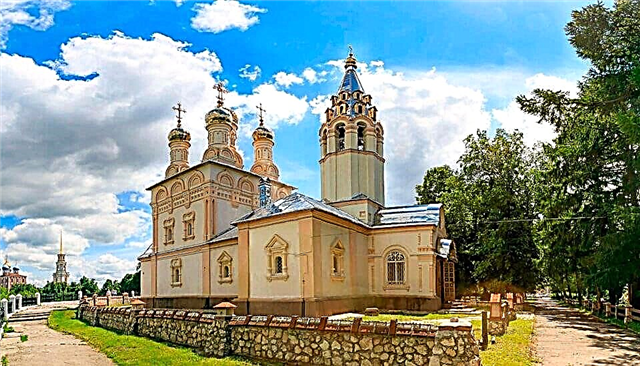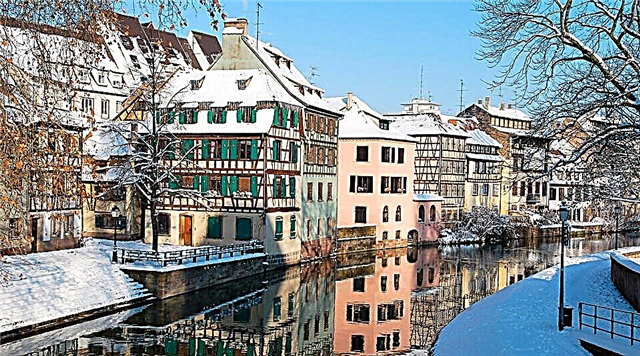The Italian land is rich in historical sites and tourist resorts. A rare traveler has not heard of ancient Rome, the magical island of Capri, bustling Rimini and, of course, Venice, unique in its kind. Often it is the latter that is the main and only point on the tourist's map. But few people know that just 15 minutes from the city on the water there is a chain of small islands separating the pearl of Italy from the Adriatic Sea. The most notable of them is the island of Lido, which will become a real outlet for those who managed to get fed up with the atmosphere of the overly touristy Venice. Against the backdrop of the latter, Lido looks like a modern town that can offer tourists shops, restaurants, golden sand and comfortable hotels.
History
Despite the ancient church with the relics of St. Nicholas the Wonderworker, the island of Lido is rarely mentioned in historical Venetian records. Geographically, it has always been considered the most important part of the defense against enemy forces. For a long time, its sandy beaches served as a mooring place for warships and quarters for military units. In the Middle Ages, Lido was better known by the name of Saint Nicholas, as he was considered the patron saint of seafarers.
From the historical point of view, the most outstanding events that took place in the territory of Lido are the following:
- In 1177, Emperor Frederic Barbarossa and Pope Alexander III signed the Treaty of Venice after Frederic's defeat at the Battle of Legnano.
- In 1202, several tens of thousands of crusaders were stationed on the island, who were locked up by the Venetian authorities due to the impossibility of paying for Italian sea vessels.
- In the first half of the twentieth century, Lido earned a scandalous fame thanks to the huge number of institutions providing services to women of easy virtue.
Protestant and Jewish cemeteries were located on the island. The latter is open to the public today. The Protestant cemetery was dismantled with the construction of a small airport in its place, some of the gravestones were transferred to the Jewish one. Once upon a time, Byron and Shelley made a horse ride along the long sandy beaches of Lido, and after some ten years, they could not recognize their usual places. The enthusiasm of the upper strata for summer vacations at the sea lured hotel developers to Lido, and behind them - wealthy vacationers.
Over time, the island developed into a popular tourist destination, as well as an area for wealthy villas and residential buildings that offered better living conditions than the old buildings of Venice. In the 1960s, many Venetians moved to Lido in search of a better life. Today, most of these private mansions have been destroyed, along with many hotels. However, there are a couple of establishments on the island that have retained their former glamor and grandeur. Today, Lido attracts guests primarily by holding large-scale cultural events, including the famous Venice Film Festival.
Sights

A tourist who has managed to walk along the streets of Venice divided by canals will be pleased to re-enter the solid land of Lido, along which you can move in the usual way. The island cannot be called a treasure trove of cultural heritage, but it definitely deserves attention, thanks to its developed infrastructure. In addition, the island will be especially appreciated by those travelers who want to stay away from Russian compatriots and the ubiquitous Chinese tourists. Peace and tranquility reign here.
Of the places worth visiting on the island of Lido, the following can be distinguished:
- Central Street: a place for day and night entertainment. Here is a real paradise for shoppers, cozy cafes and clubs working "to the last client". Especially pleasing are the prices, which are two times lower than in neighboring Venice. Closer to the sea line, you can visit the cozy Fabio's pizzeria, where, according to many travelers, one of the best pizzas in Italy is prepared. And nearby they sell delicious "gelatto" (Italian ice cream).
- Beaches. Lido may not have earned the fame of a popular resort in the modern world, but this does not detract from the beauty of its golden beaches. Most of them are owned by hotels or private owners, equipped with sun loungers and umbrellas and carefully cleaned. Of course, the entrance to them is paid (or is included in the cost of living in the hotel), but for those who want to save money, there is also a free beach called "spiaggia libera".

The natural reserve and sand dunes of Alberoni, protected by the World Wildlife Fund, are considered unique on the island. This is more than a hundred hectares of golden sand, framed by a beautiful pine forest.
- Architecture. Lido buildings are the most striking embodiment of the Italian Art Nouveau called "Liberty". The most impressive of these are the casino (now closed), the Grand Excelsior Hotel and the Grand Hotel des Bains.
- Every year the Lido hosts the famous Venice Film Festival, which has been held since the 1930s. At this time, on the streets of the island, you can meet many eminent actors and directors seeking recognition from the masters of cinema.
The relics of St. Nicholas the Wonderworker

One of the oldest and most important sights of Lido is the Church of St. Nicholas the Wonderworker, built at the beginning of the 11th century, where the relics of the Saint are kept. Their way to Italy was not easy. It is no secret that the Venetians participated and sponsored the Crusades. During one of them, they burst into the Basilica of St. Nicholas, but did not find the relics, even dismantling the tomb into stones. Just before the departure, the Venetians learned that the service was sometimes conducted in one of the chapels, where they opened the floor at the altar. According to legend, the Italians felt a wonderful fragrance, and after a few moments, they discovered the remains of the Saint.

Initially, the famous Cathedral of San Marco on the square of the same name in Venice wanted to be named in honor of St. Nicholas, or, in extreme cases, to designate the building as two-altar. However, the participants of the campaign, even before going on it, made a sacred vow that they would certainly bring the relics of the Saint to the Church of Lido. Since the island is a natural barrier that protected Venice from sea invaders, they considered it right to leave Saint Nicholas to guard the island, and thus Venice. Since ancient times, Venetian ships, before sailing and upon arriving home, stopped at the Church of St. Nicholas the Wonderworker to ask his blessing on a long journey and thank him for the happy return. Many travelers to this day follow this good tradition.
Where is it located and how to get there
Lido Island is located some fifteen minutes from the city on the water. You can get to it by vaporetti (small boats that are the main public transport in Venice and its surroundings). From Venice itself, it is worth taking route number 1 (you can get on the vaporetti at the railway station, Grand Canal or Piazza San Marco), you will need a final stop. The cost will be about 7 euros. From Marco Polo airport you need to take the red line to Lido Casino station, the cost will be 15 euros one way.











